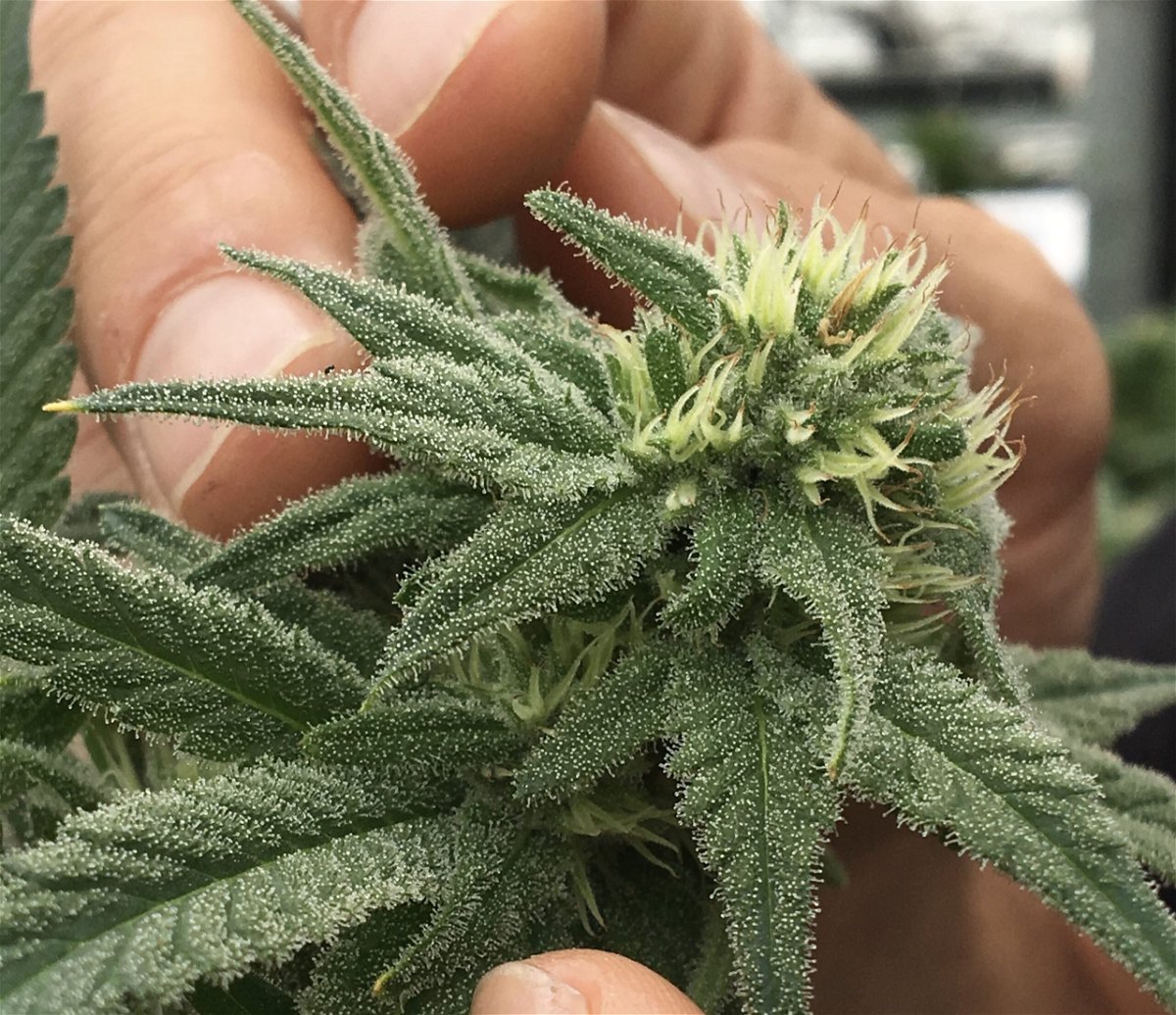County projects a $10.5 million shortfall in cannabis tax revenue

SANTA BARBARA COUNTY, Calif. – The ongoing downward trend in tax revenues from the cannabis industry in Santa Barbara stands out as the dark spot in an otherwise bright financial picture, county officials said this week.
While revenue from property taxes and hotel bed taxes is estimated to exceed county projections by $17 million and $2.2 million, respectively, for fiscal year 2022-23, covering last July through next June, cannabis tax revenue could fall short of projections by $10.5 million, according to a second quarter budget update that was presented to the county Board of Supervisors on Tuesday.
Cannabis tax revenues for 2022-23 are projected to be $5.8 million, Brittany Heaton, principal cannabis analyst for the County Executive Office, told the board. That’s just over a third of the $16.3 million that was budgeted last June for what the county calls its “cannabis program,” which includes public services such as libraries that cannabis tax revenues are earmarked for.
“This revenue update is a wakeup call for changes,” said Supervisor Laura Capps, who represents the Goleta Valley. “ … We should take a look at how to do things better.”

Supervisor Das Williams, whose district includes 34 greenhouse cannabis operations in the Carpinteria Valley, pushed back, saying that cannabis policy was not on Tuesday’s agenda.
“If revenue bounces back, will you support the program?” he asked Capps.
County officials told the board they would use carryover cannabis tax revenues from previous years to cover much of the $9.7 million that was budgeted in the cannabis program for county libraries, long-range planning, parks, roads and other services in 2022-23. For the 2023-24 fiscal year, Heaton said that the county is projecting $7 million in cannabis tax revenues.
“We do expect to see an increase next year, but not at the same rate we were seeing in the earlier years of the program,” she said.
The board voted 4-1 to accept the CEO’s budget update, with Capps opposed.
In a press release on Tuesday, leaders of the Santa Barbara Coalition for Responsible Cannabis, a countywide group that for years has lobbied for stronger regulation of the industry, took aim at what they called the “paltry tax revenue” from commercial cannabis.
“I wish I could say I’m shocked,” stated coalition President Blair Pence, who owns a vineyard west of Buellton. “The cannabis ordinance was poorly created and has been problematic since its inception. Anyone who lives or works next to a pot ‘grow’ knows there are drawbacks: odor, terpenes that flair up allergies, traffic, and safety concerns.”
Santa Barbara County is No. 1 in California for active cannabis cultivation licenses issued by the state, with 1,614, or 22 percent of the total, state reports show. The large number of licenses is a reflection of the sheer size of the industry here — 1,575 acres of outdoor “grows,” primarily in the North County, and 158 acres of greenhouse cannabis in the Carpinteria Valley.
Humboldt County is second in the state for active cannabis cultivation licenses, with 1,454, or 20 percent of the statewide total.
An ongoing glut of cannabis on the market in California has caused prices for wholesale cannabis “flower” to plummet in recent years. By some estimates, California growers are producing three times as much marijuana as can be consumed here. In 2021, the average price for wholesale cannabis flower was $1,200 per pound: it is $500 per pound today. The illegal market is believed to account for at least two-thirds of statewide sales.
“We produce product that is part of the glut,” Heaton said, noting that the ban on shipping cannabis across state lines is the biggest obstacle to higher prices and higher tax revenues. In addition, she said, tax revenues in Santa Barbara County are lower this year because a dozen tax-paying North County growers recently quit operating, having run out of money or failed to meet the county’s permitting and licensing deadlines.
Compounding the problem is the self-reporting tax system for cannabis in Santa Barbara County. Many California counties use a tax formula based on the square footage of cannabis under cultivation; that system was recommended for use by the Santa Barbara County Grand Jury in 2020. Instead, growers here are assessed a four-percent tax on their gross earnings; and it’s been hard to collect.
In the second quarter of 2022-23, of 71 cannabis operators in the county, only 40 reported their gross earnings for the second quarter, Heaton told the board. Fifteen reported zero earnings, and 12 did not file a report. Previous budget updates have painted a similar picture; those “missing” growers could be scofflaws, or they could be simply fallowing their land.
Capps, who was elected to the board in November and is its newest member, asked, “Do we have a sense of how much revenue we’re missing out on? … This system is very opaque and it seems there is leniency.”
Heaton promised to report back with a rough estimate of uncollected taxes, adding that it was presently “maybe half” what’s owed. She said the county had not revoked the business license of any grower for non-payment of taxes, but that an enforcement case against one grower was pending.
At their peak in fiscal year 2021-22, the county’s cannabis tax revenues totaled $15.7 million. Halfway through this fiscal year, only $3.5 million has been collected to date. (Heaton said that $1.4 million of that amount came in after the Jan. 31 filing deadline for the second quarter and was not included in county projections for the fiscal year.)
Lionel Neff, a coalition board member and Carpinteria Valley resident, called for improvements to the county’s 2018 cannabis ordinance.

“This clearly isn’t working,” he said in a statement to the press. “The county told us one thing and delivered something else. That something else is a money pit that creates a nuisance across the county. No one can argue with a straight face that it isn’t time for this to change.”
According to the CEO’s budget update, it is costing $5 million yearly for the county District Attorney’s office, Sheriff’s Department, County Counsel’s office and Treasurer-Tax Collector and other departments such as the County Fire Department and Environmental Health Services to ensure compliance with county regulations and enforce the law against black market growers and dealers. Increasingly, officials said, illegal cultivation is moving indoors to garages and warehouses where it’s harder to detect, except by neighbors who report suspicious comings and goings at strange hours.
An additional $2.1 million for permitting and licensing by county planners and the CEO’s office is paid for with cannabis industry fees. In all, according to the budget update, 30 full-time county positions in nine county departments are assigned to cannabis, 18 of them paid for by the growers and 12 paid for out of cannabis tax revenues.
“This is occupying a lot of people’s time at the expense of other issues that impact more people in the county,” Capps said.
Supervisors Steve Lavagnino of Santa Maria, a chief architect of the county’s cannabis ordinance with Williams, objected to Capps’s critiques. He said that cannabis revenues had brought in $43 million since 2019, or slightly more than bed taxes.
“We’re taking campaign issues and trying to bring them to the board and start changing policy,” Lavagnino said. “… To tell people that these 30 people are wasting their time on cannabis when they could be doing something else is misleading.”
But on Tuesday, like Capps, Supervisors Joan Hartmann and Bob Nelson also wanted to discuss changing cannabis policy. Hartmann and Nelson represent the wine country west of Buellton, where cannabis growers have clashed with vintners and residents over the pervasive smell of pot at harvest time.
Hartmann took aim at the county’s complaint-driven response to the stench of pot in urban neighborhoods, which requires residents to fill out a form every time they detect a bothersome smell. Many have given up reporting because it is almost impossible for the county to identify who’s at fault among so many cannabis operations. Hartmann said she was interested in establishing “a more proactive compliance effort” by the county that the industry would pay for.
Nelson said he wanted to reform the tax system for cannabis by putting it on the ballot, a measure that would have to wait until at least November 2024.
“A more transparent tax scheme would be a benefit to everybody involved,” Nelson said.
Melinda Burns is an investigative journalist with 40 years of experience covering immigration, water, science and the environment. As a community service, she offers her report to multiple publications in Santa Barbara County, at the same time, for free.
